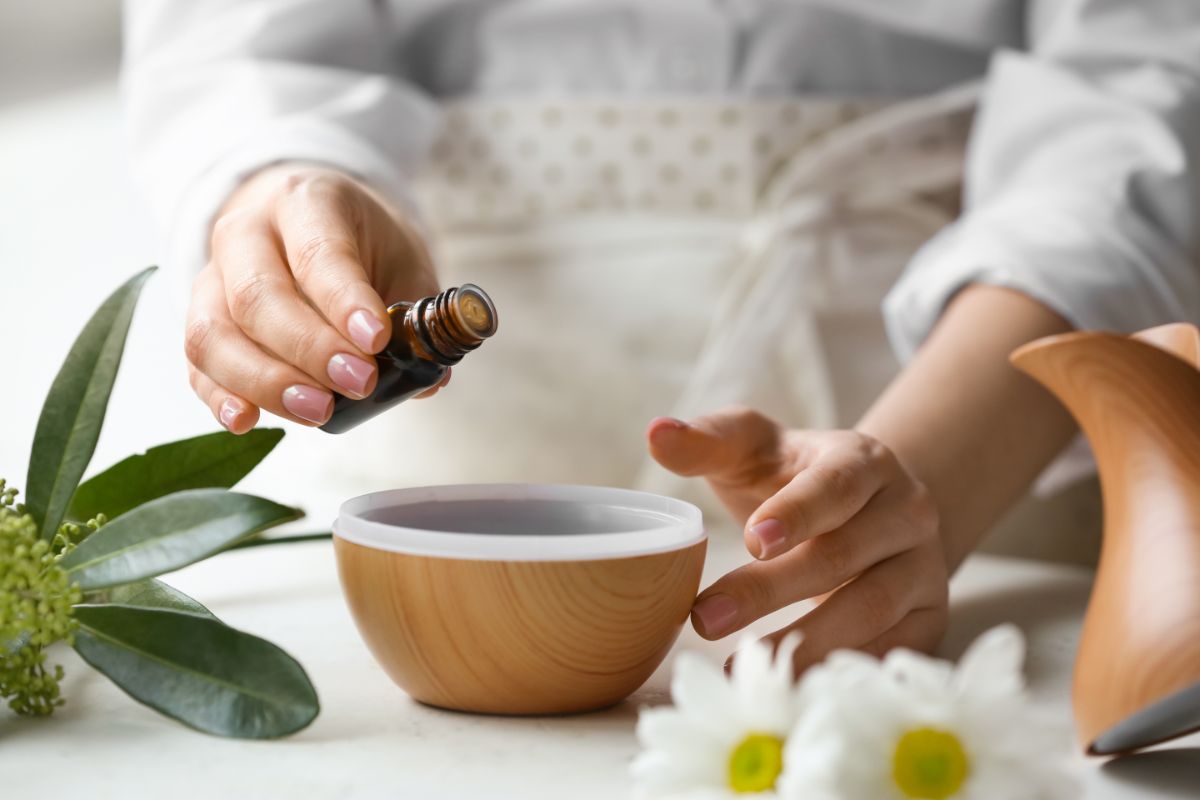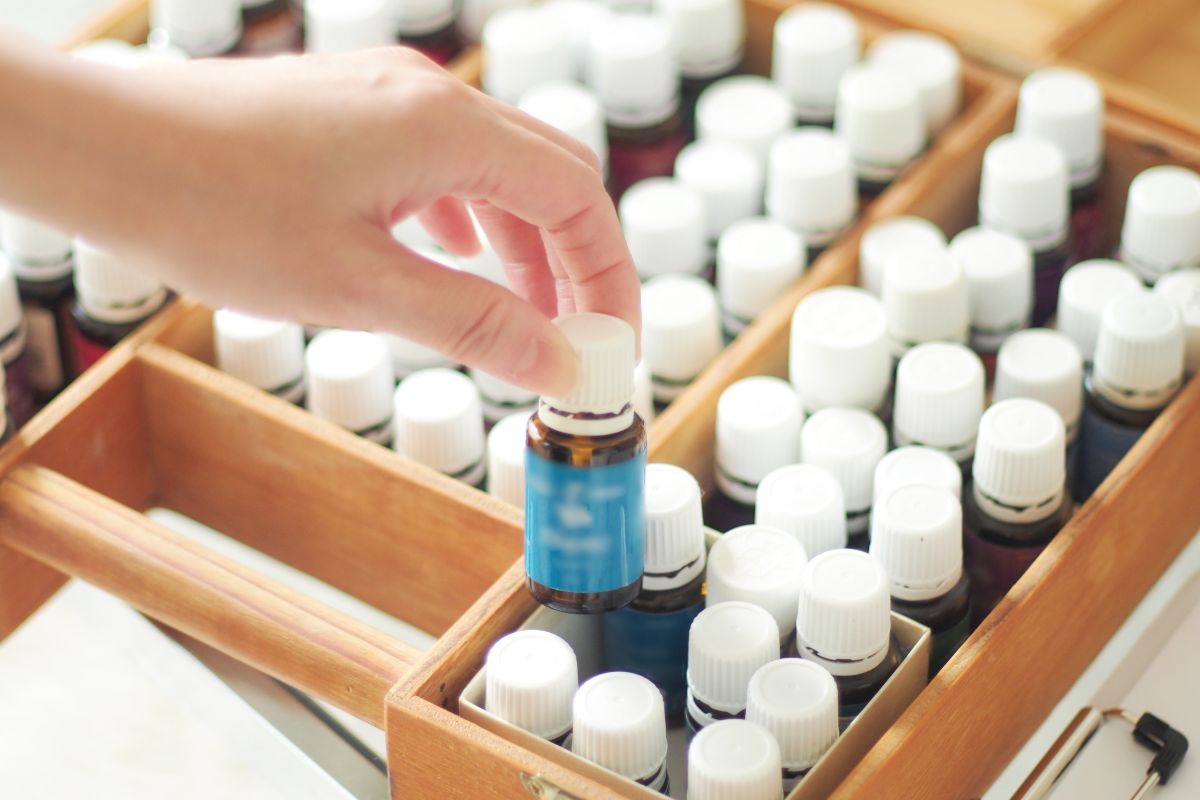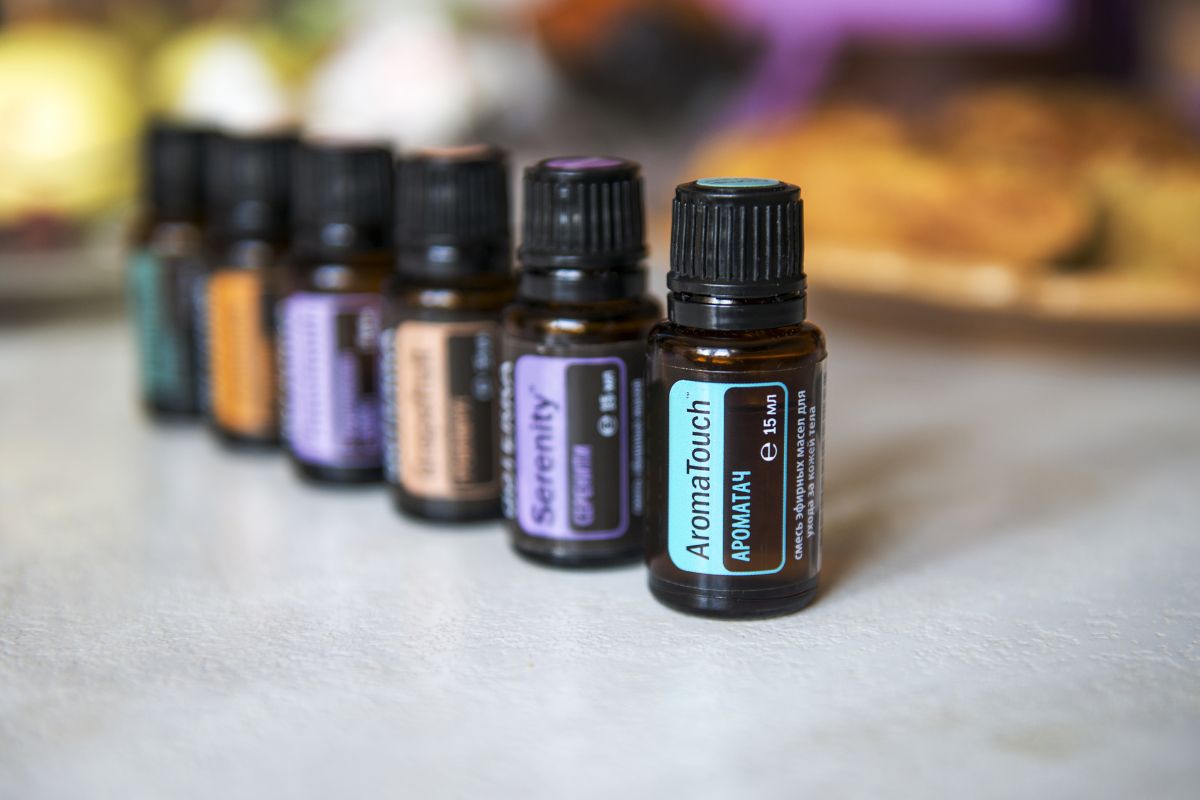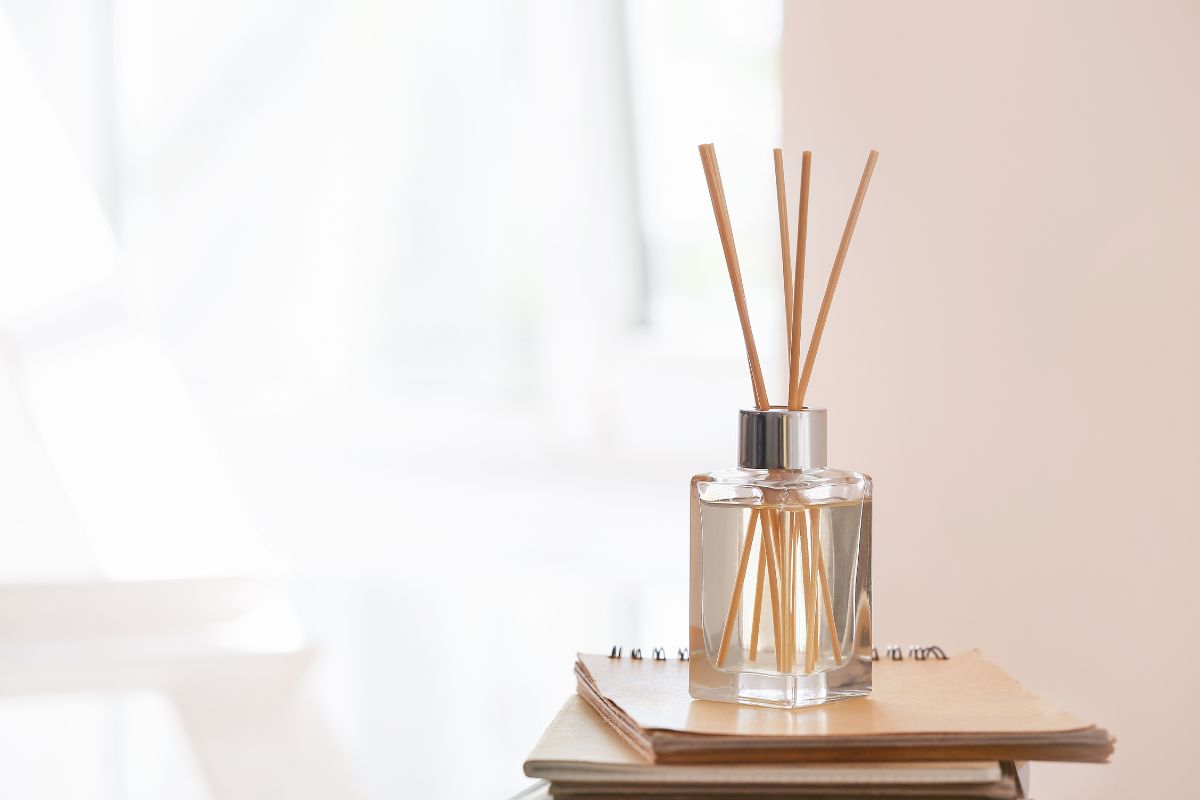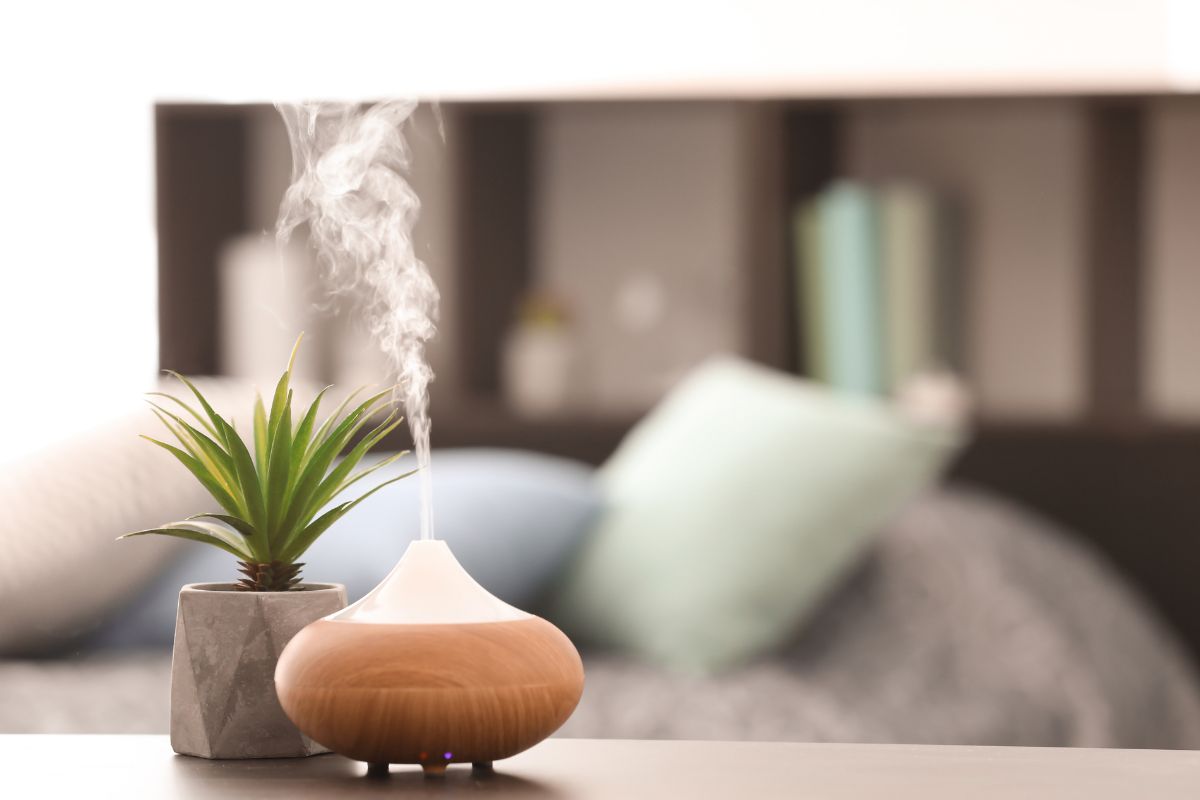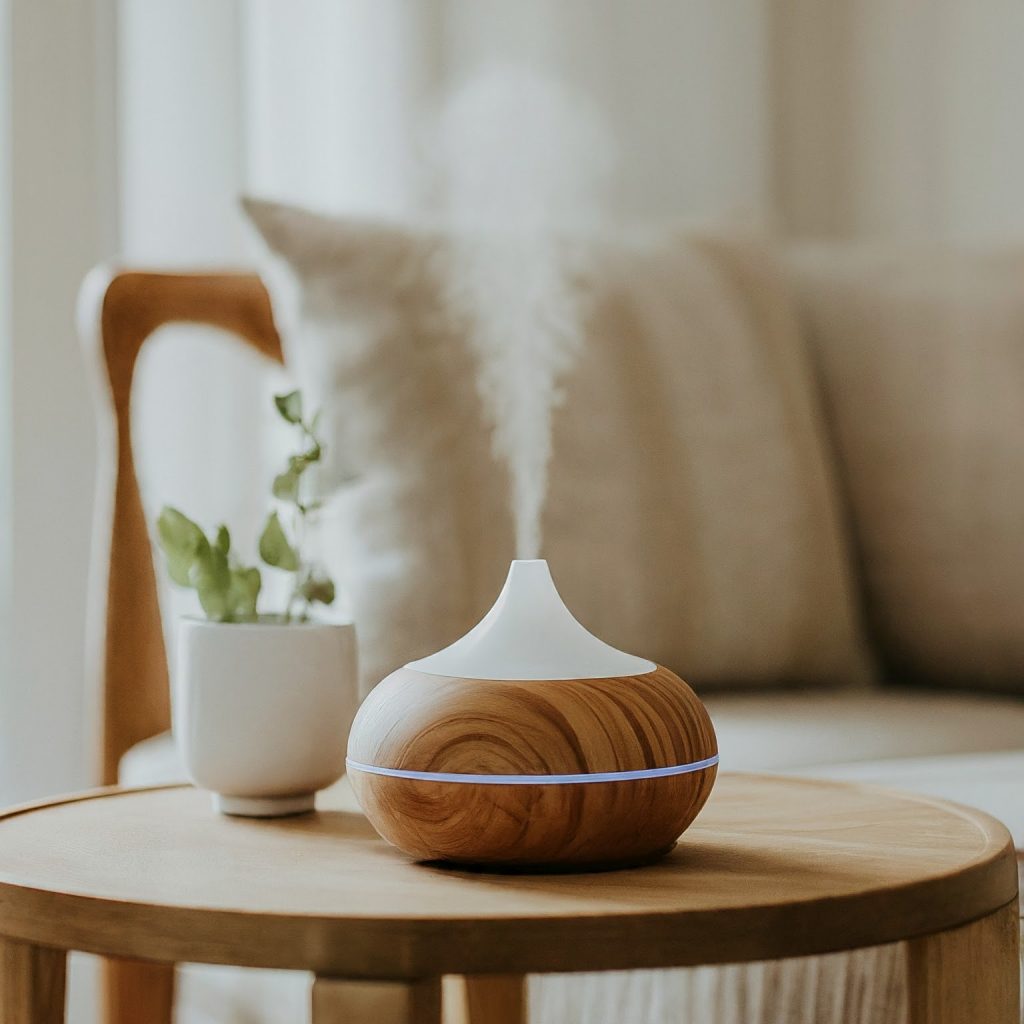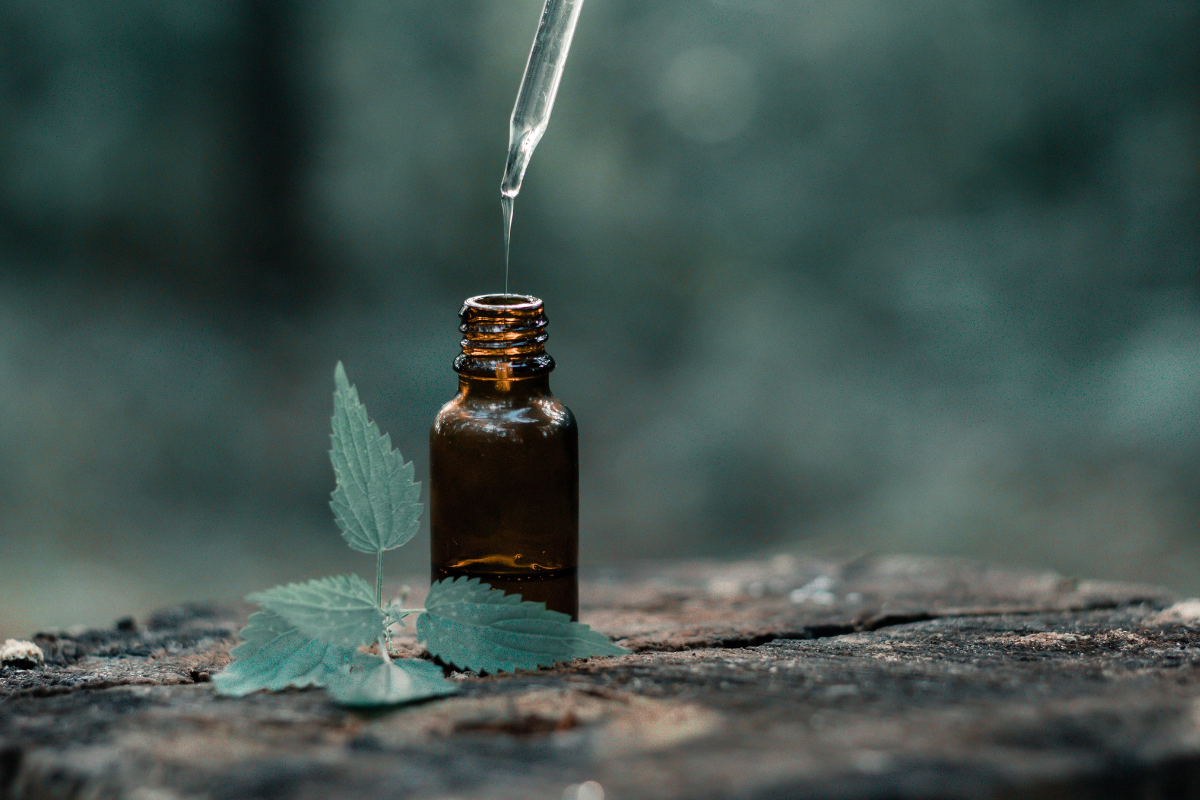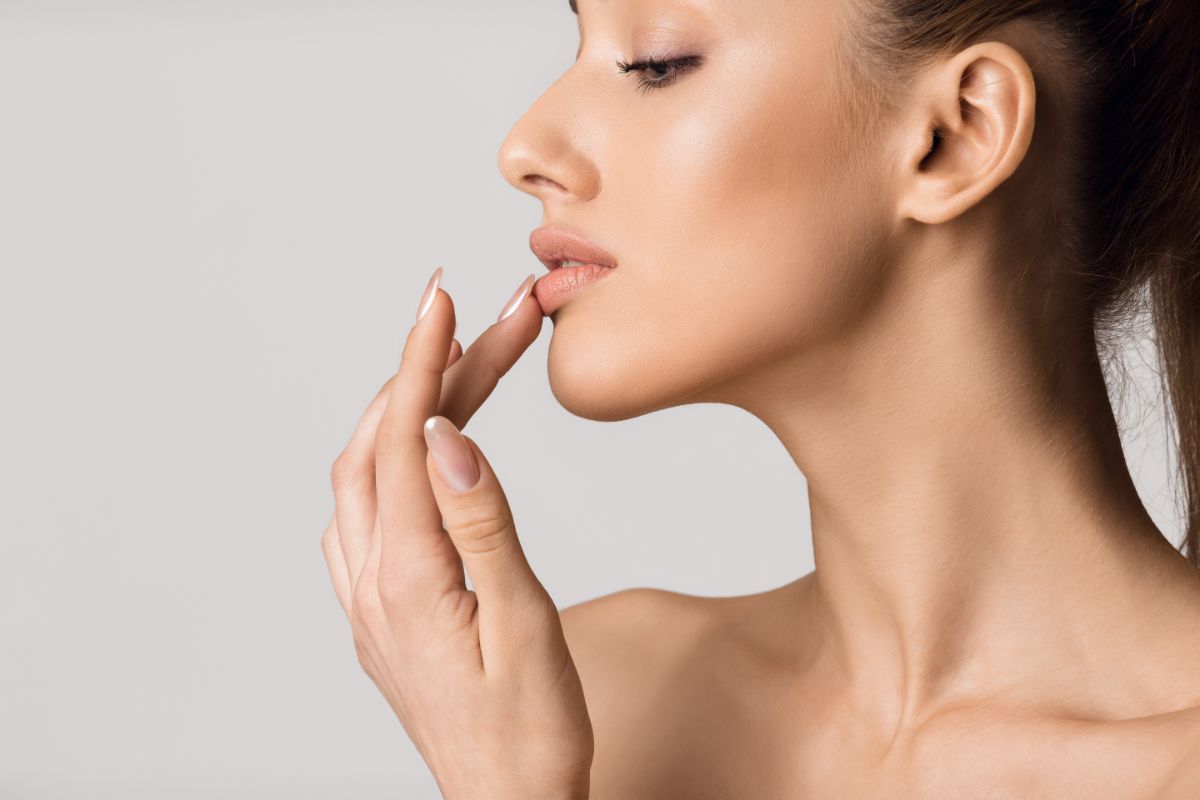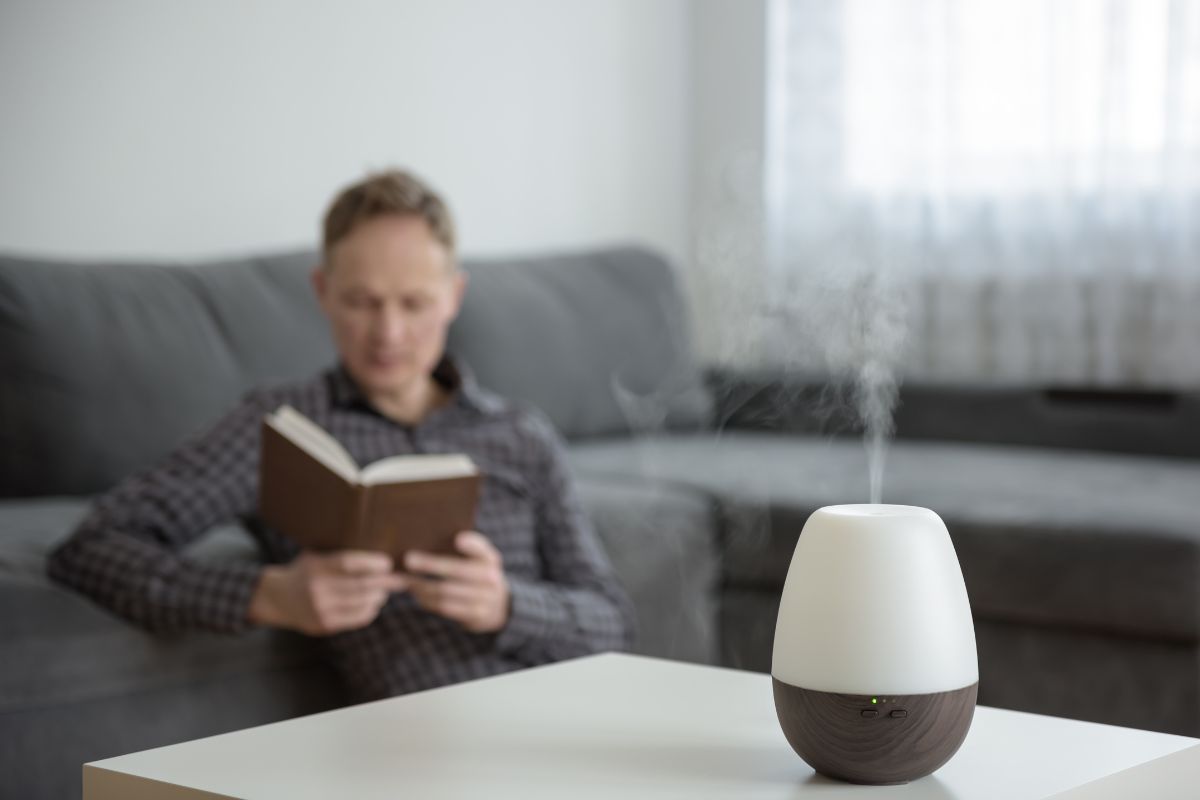Candles have been used for centuries to create a warm and inviting atmosphere in homes, and they continue to be a popular choice for relaxation, meditation, and adding ambiance to special occasions.
While store-bought candles come in a wide range of scents, making your own candles with essential oils can be a fun and rewarding DIY project that allows you to personalize your candle’s fragrance to your liking.
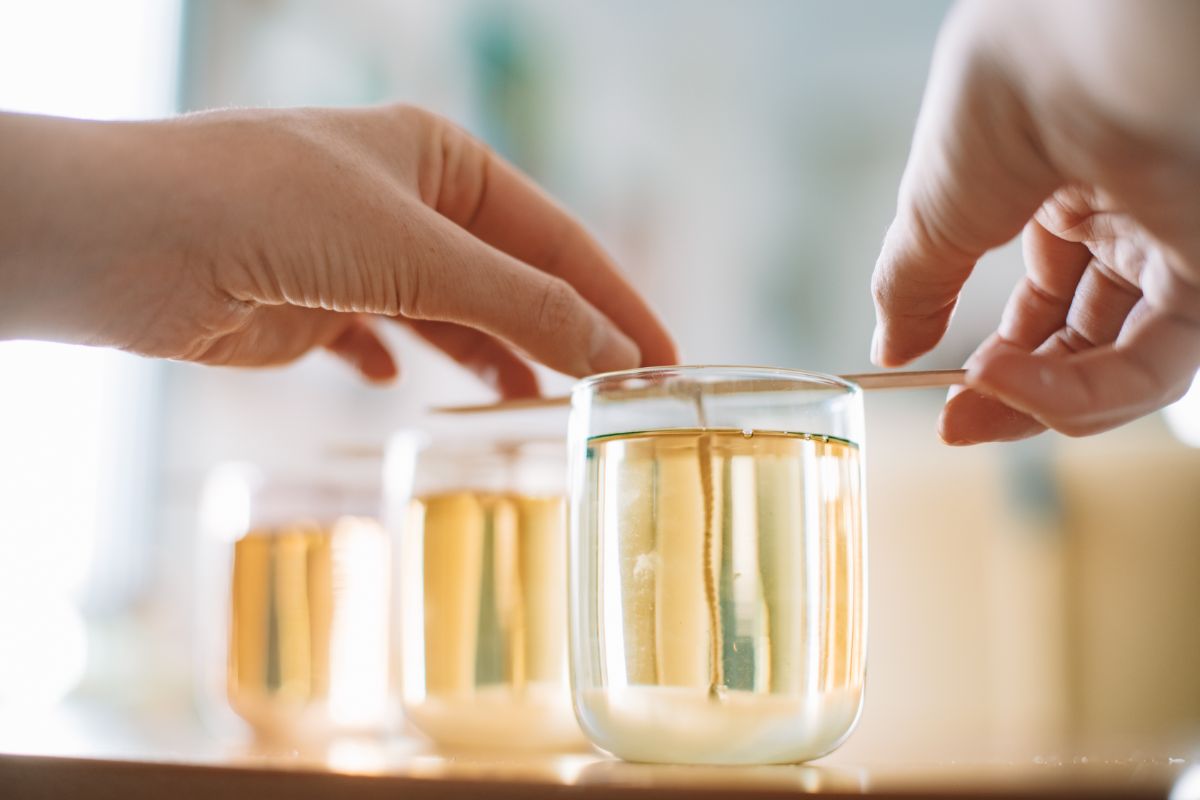
If you’re new to candle making, choosing the right essential oils can be a daunting task. With so many options available, it’s easy to feel overwhelmed by the variety of scents and their potential benefits.
In this in-depth tutorial, we’ll guide you through the best essential oils for candle making and provide step-by-step instructions on how to create beautiful and fragrant candles at home.
We’ll begin by discussing the benefits of using essential oils in your candles and how to select the right oils for your needs.
From there, we’ll delve into the step-by-step process of creating candles, including selecting the appropriate waxes, wicks, and containers.
We’ll cover safety precautions and provide tips and tricks to ensure your candle-making experience is both enjoyable and successful.
Whether you’re a seasoned candle maker or just starting out, our tutorial will provide you with all the information you need to create personalized scents that will enhance your home’s ambiance and fill it with beautiful fragrances.
With our guidance, you’ll be able to create candles that not only look beautiful but also provide all the benefits that come with using essential oils.
So, let’s get started and explore the world of essential oils and candle making together!
What Are Essential Oils?
Essential oils are highly concentrated extracts from plants which capture the plant’s flavor and scent.
They are typically extracted through distillation or cold-pressing from the leaves, stems, flowers, bark, or roots of various plants, and are frequently employed in aromatherapy and other alternative therapies for their therapeutic properties.
Essential oils have been used for thousands of years for their aromatic and medicinal qualities, and their popularity has grown significantly in recent years due to their natural and holistic approach to healing.
They can be used topically, ingested, or inhaled, and each oil has its special properties and benefits.
Peppermint, lavender, tea tree, eucalyptus, and lemon, are some of the most commonly used essential oils.
These oils are known for their calming, invigorating, and uplifting properties and can be used for a wide range of purposes, including stress relief, pain relief, improving mood, and promoting relaxation.
When used in candle making, essential oils can add a beautiful fragrance to the candle while also providing the therapeutic benefits associated with each oil.
They are a natural and safe alternative to synthetic fragrances and are perfect for those who prefer to use natural products in their home.
What Are Essential Oils Used For?
Essential oils have a wide range of uses and are popular in various applications, including aromatherapy, skincare, and home cleaning products. A few of the most common uses for essential oils include:
- Aromatherapy: Essential oils are widely used in aromatherapy to promote relaxation, tackle stress, improve mood, and provide other health benefits. They are often used in diffusers or added to bathwater for a relaxing and rejuvenating experience.
- Skincare: Many essential oils are used in skincare products due to their anti-inflammatory and antimicrobial properties. They can reduce acne, soothe irritated skin, and promote healthy skin.
- Cleaning: Essential oils are also commonly used in cleaning products as a natural alternative to harsh chemicals. They help kill bacteria, disinfect surfaces, and leave a pleasant scent.
- Pain relief: Some essential oils have analgesic properties that can help to reduce pain and inflammation. They can be applied topically or used in massage therapy to help alleviate sore muscles and joints.
- Respiratory health: Essential oils like eucalyptus and peppermint are known for their ability to promote respiratory health. They can relieve congestion, coughs, and other respiratory issues.
Essential oils are used for a variety of purposes, and their therapeutic benefits are widely recognized.
However, it’s essential to use essential oils safely and under the guidance of a trained professional, as they can be potent and potentially harmful if not used correctly.
Drawbacks Of Essential Oils
While essential oils have many benefits, there are also some potential drawbacks to consider. Here are some of the possible drawbacks of using essential oils:
- Sensitivity and Allergic Reactions: Essential oils are potent plant extracts, and some people may be sensitive to their effects. In some cases, essential oils can cause skin irritation, allergic reactions, or respiratory problems when inhaled.
- Skin Irritation: Essential oils can be irritating to the skin when applied directly or used in high concentrations. It is important to dilute essential oils with a carrier oil before applying them to the skin.
- Toxicity: Some essential oils can be toxic if ingested or used in high concentrations. For example, wintergreen oil contains high levels of salicylates, which can be toxic if ingested in large quantities.
- Quality Control: Essential oils are not regulated by the FDA, and the quality of essential oils can vary widely. It is important to purchase essential oils from a reputable source to ensure purity and quality.
- Interactions with Medications: Some essential oils can interact with medications, and it is important to consult with a healthcare provider before using essential oils if you are taking prescription medications.
Essential oils are generally safe when used correctly, but it is important to be aware of their potential drawbacks and to use them responsibly.
What Are The Differences Between Essential Oil Candles And Normal Candles?
The main difference between an essential oil candle and a normal candle is the presence of essential oils in the former.
Essential oil candles are made using a blend of natural essential oils, which are extracted from plants, flowers, and other natural sources.
These oils are believed to have therapeutic properties and are often used in aromatherapy to promote relaxation, reduce stress, and improve mood.
On the other hand, normal candles are typically made using paraffin wax, a petroleum byproduct.
They may also contain synthetic fragrances, colorants, and other additives to enhance their scent and appearance. While they may smell pleasant, they do not provide the same therapeutic benefits as essential oil candles.
Another difference is that essential oil candles tend to burn cleaner than normal candles. This is because they are made using natural ingredients and do not produce harmful chemicals or pollutants when burned.
Normal candles, on the other hand, can release toxins such as benzene and toluene when burned, which can be harmful when inhaled.
6 Best Essential Oils For DIY Candle Making
When it comes to candle making, essential oils are a popular choice for adding fragrance and therapeutic benefits to your candles. Here are some of the best essential oils for candle making:
1. Lavender
Lavender oil is a popular choice for candle making due to its calming and relaxing properties. It has a floral, herbaceous scent that is perfect for promoting relaxation and reducing stress.
Pros
- Calming and relaxing, promotes sleep and reduces stress.
Cons
- Some people may find the scent too floral or overpowering.
2. Peppermint
essential oil has a refreshing and invigorating scent that can help to promote mental clarity and boost energy. It is also known for its ability to help relieve headaches and nausea.
Pros
- Refreshing and invigorating, promotes mental clarity and energy.
Cons
- Can be too strong for some people and may cause headaches or nausea in high concentrations.
3. Eucalyptus
Eucalyptus essential oil has a fresh, clean scent that is perfect for promoting respiratory health. It can help to relieve congestion and coughs, making it a great choice for candles during the cold and flu season.
Pros
- Fresh and clean scent, promotes respiratory health and relieves congestion.
Cons
- May be too medicinal or overpowering for some people.
4. Lemon
Lemon essential oil has a bright and refreshing scent that is perfect for promoting a positive mood and boosting energy.
It is also known for its cleansing and purifying properties, making it a great choice for candles used in cleaning or meditation.
Pros
- Bright and refreshing, promotes positivity and boosts energy, and has cleansing and purifying properties.
Cons
- Can be too acidic or sour for some people.
5. Cinnamon
Cinnamon essential oil has a warm and spicy scent that is perfect for creating a cozy and inviting atmosphere. It can also help to improve circulation and reduce inflammation.
Pros
- Warm and spicy, creates a cozy and inviting atmosphere, and has anti-inflammatory properties.
Cons
- May be too sweet or overpowering for some people.
6. Tea Tree
Tea tree oil has a fresh and herbaceous scent that is perfect for promoting a clean and healthy environment.
It is known for its antimicrobial properties, making it a great choice for candles used in cleaning or during the cold and flu season.
Pros
- Fresh and herbaceous, has antimicrobial properties and promotes a clean and healthy environment.
Cons
- Can be too medicinal or strong for some people and may cause skin irritation in high concentrations.
There are many essential oils to choose from when it comes to candle making, and the best choice will depend on your personal preferences and the therapeutic benefits you are looking for in your candles.
When using essential oils in candle making, be sure to follow proper safety guidelines and use high-quality oils for the best results.
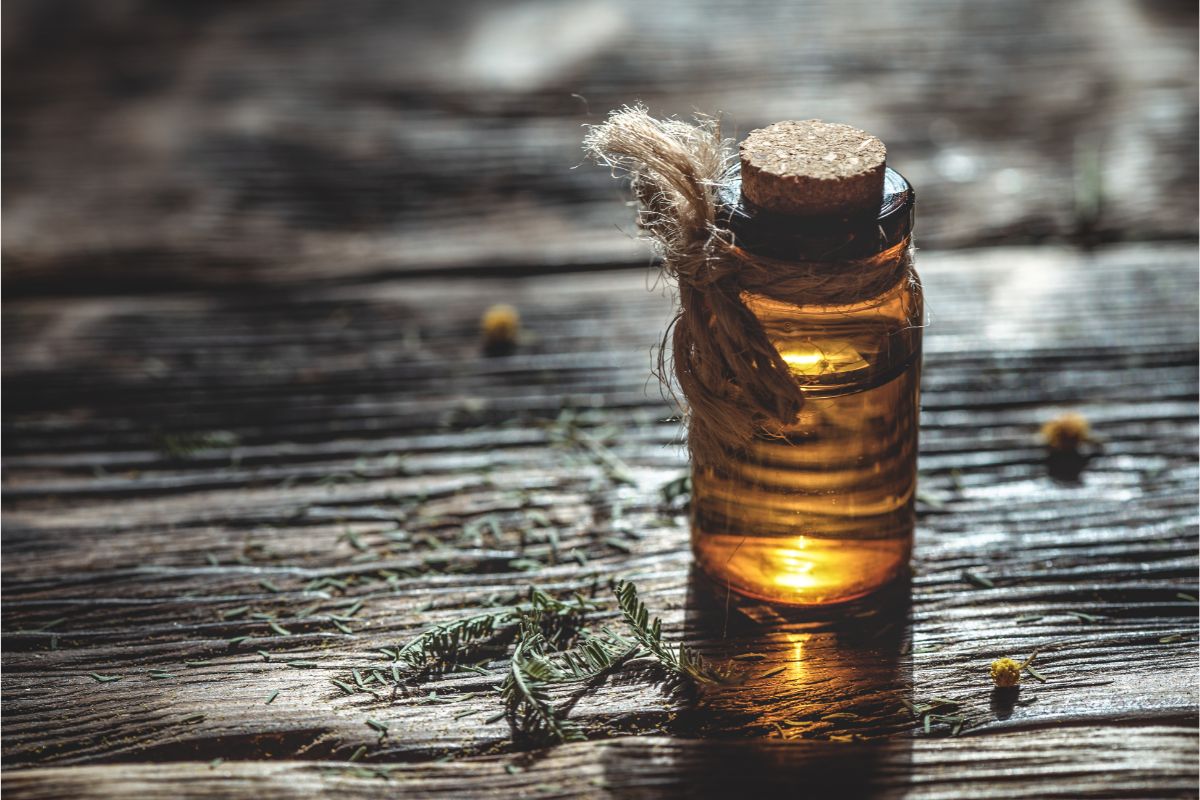
How To Select The Right Essential Oils For You
Choosing the right essential oils for you can depend on a variety of factors, including your personal preferences, the therapeutic benefits you are looking for, and any sensitivities or allergies you may have.
Here are some tips to help you choose the right essential oils for you:
- Consider the therapeutic benefits: Different essential oils have different therapeutic benefits, such as promoting relaxation, boosting energy, or improving respiratory health. Consider what benefits you are looking for in your candles and choose oils that align with those goals.
- Start with familiar scents: If you are new to using essential oils, start with scents that you are familiar with and enjoy. For example, if you love the scent of lavender, try using lavender essential oil in your candles.
- Experiment with blends: Essential oils can be blended together to create unique and personalized scents. Experiment with different blends to find combinations that you love.
- Consider any sensitivities or allergies: Some people may be sensitive or allergic to certain essential oils. If you have any allergies or sensitivities, do your research to ensure that the oils you choose are safe for you to use.
- Choose high-quality oils: When purchasing essential oils, choose high-quality oils from a reputable source. Look for oils that are 100% pure and free from additives or synthetic fragrances.
Ultimately, choosing the right essential oils for you will depend on your personal preferences and needs.
Take your time to experiment with different oils and blends to find the scents that work best for you.
What Are The Benefits Of Using Essential Oil Candles?
Using essential oil candles can provide a variety of benefits for both your physical and mental health (see also “Essential Oils That Improve Mental Health“). Here are some of the benefits of using essential oil candles:
- Aromatherapy: Essential oils are known for their therapeutic properties, and using them in candles can provide a relaxing and rejuvenating aromatherapy experience. Different essential oils can provide different benefits, such as promoting relaxation, boosting energy, or improving respiratory health.
- Mood enhancement: Certain essential oils can help to improve your mood and create a positive atmosphere. For example, citrus scents like lemon or orange can be uplifting and energizing, while lavender can promote relaxation and calmness.
- All-natural fragrance: Many commercial candles contain synthetic fragrances and chemicals that can be harmful to your health. Essential oil candles provide a natural and safe alternative, without the harmful chemicals.
- Eco-friendly: Essential oil candles can be made using natural, eco-friendly ingredients like soy wax or beeswax. They are also biodegradable, making them a more sustainable choice compared to traditional candles made from paraffin wax.
- Better air quality: Burning essential oil candles can help to purify the air in your home, as some essential oils have natural antibacterial and antiviral properties. This can be especially beneficial during cold and flu season.
Using essential oil candles can provide a natural and therapeutic way to improve your overall well-being and create a relaxing and inviting atmosphere in your home.
How To Choose The Correct Materials For Your Essential Oil Candles
Selecting the right materials is an important step in making essential oil candles. Here are some tips on how to choose the right materials:
- Wax: Choose a high-quality wax that is suitable for making candles. Soy wax, beeswax, and coconut wax are popular choices for making essential oil candles because they are natural, eco-friendly, and provide a clean burn.
- Wicks: Choose wicks that are the appropriate size for your candle containers. The wick should be able to reach the bottom of the container and be centered. Cotton wicks are a good choice for essential oil candles because they are natural and provide a clean burn.
- Essential oils: Choose high-quality essential oils that are pure and natural. Look for oils that are specifically labeled as suitable for use in candles. It’s important to choose oils that are safe for use on skin and inhaled, as you will be breathing in the scent when the candle is burning.
- Candle containers: Choose containers that are heat-resistant and suitable for use with candles. Glass jars, ceramic pots, and metal tins are popular choices for candle containers. Make sure the containers are clean and dry before pouring the melted wax into them.
- Dyes (optional): If you want to add color to your candles, choose candle dyes that are specifically designed for use in candles. Liquid and block dyes are available in a variety of colors. It’s important to use the recommended amount of dye, as too much can affect the burning quality of the candle.
By selecting high-quality materials, you can ensure that your essential oil candles will burn cleanly and provide a natural and therapeutic scent.
How To Make Essential Oil Candles
Here is a step-by-step guide to making essential oil candles:
Materials:
- Soy wax flakes
- Candle wicks
- Essential oils of your choice
- Candle dye (optional)
- Glass jars or other candle containers
- Double boiler or a heat-safe glass measuring cup and a pot
- Thermometer
- Wooden skewer or chopstick
- Scissors
Instructions:
- Prepare your work area by covering it with newspaper or wax paper.
- Measure out the amount of soy wax flakes you will need for your candle containers. A good rule of thumb is to use 1 pound of wax flakes for every 16-20 ounces of candle container volume.
- Melt the wax flakes in a double boiler or heat-safe glass measuring cup placed in a pot of simmering water (see also “How To Make Your Own DIY Florida Water“). Stir occasionally with a wooden skewer or chopstick until the wax is completely melted and the temperature reaches 180-190°F.
- While the wax is melting, prepare your candle containers by placing the wicks in the center of each container and securing them in place with a small drop of melted wax. Make sure the wicks are centered and straight.
- Add your desired amount of essential oils to the melted wax and stir well to combine. A general guideline is to use 1 ounce of essential oil per 1 pound of wax.
- If you want to add color to your candles, add a small amount of candle dye to the melted wax and stir well. Add more dye as needed to achieve your desired color.
- Once the wax has melted and the essential oils and dye (if using) have been added, allow the wax to cool to around 140-150°F.
- Carefully pour the wax into your prepared candle containers, making sure to keep the wicks centered and straight. Fill the containers to about 1/2 inch below the rim.
- Allow the candles to cool and solidify completely. This will take several hours, depending on the size of your candles.
- Once the candles have cooled and solidified, trim the wicks to about 1/4 inch using scissors.
Your essential oil candles are now ready to use! Light them up and enjoy the natural and therapeutic scents.
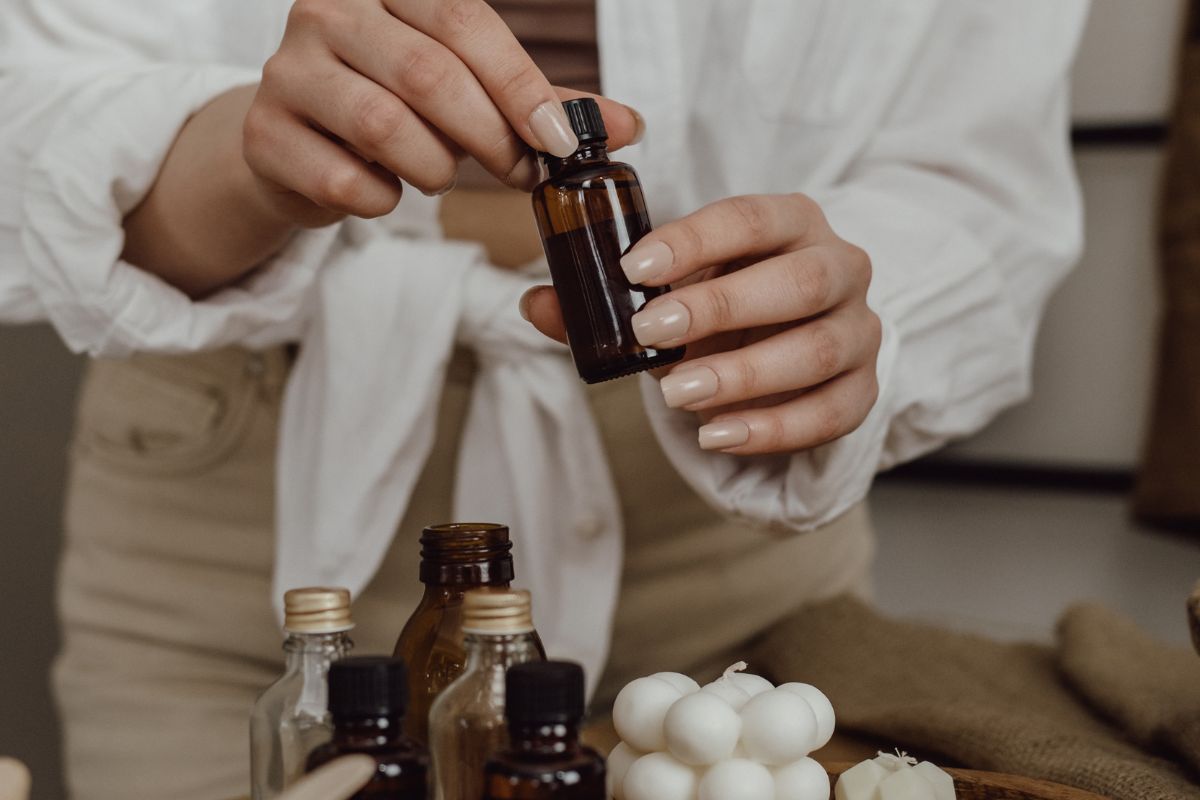
Safety Precautions
Essential oil candles are a popular way to enjoy the benefits of aromatherapy in the comfort of your own home (see also “17 Great Ways To Use Raven Essential Oil Blend“).
However, it is important to take some safety precautions when using them to prevent accidents or potential hazards. Here are some safety precautions for essential oil candles:
- Always read the label: Before using any candle, it’s important to read the label to understand its proper use and any potential hazards associated with it.
- Keep the candle away from flammable materials: Essential oil candles should be kept away from curtains, furniture, or anything else that could catch fire.
- Keep the candle away from children and pets: Essential oil candles should be kept out of reach of children and pets to avoid accidental ingestion or injury.
- Never leave the candle unattended: Essential oil candles should always be supervised when lit and never left unattended.
- Use a proper candle holder: To avoid the risk of fire, use a candle holder specifically designed for the size of your candle.
- Trim the wick: Trim the wick to 1/4 inch before lighting the candle to prevent excessive flame and smoking.
- Burn the candle in a well-ventilated area: Burning candles in a well-ventilated area will reduce the risk of respiratory problems associated with inhaling the essential oil scent (see also “Sensitization – What Is It And How To Reduce The Risk“).
- Extinguish the candle properly: To extinguish the candle, use a snuffer or blow it out gently. Do not use water to extinguish the flame.
By following these safety precautions, you can safely enjoy the benefits of aromatherapy with essential oil candles.
Where Can You Buy Ready-Made Essential Oil Candles?
You can buy essential oil candles from a variety of places, including:
- Online retailers: There are many online retailers that sell essential oil candles, including Amazon, Etsy, and various candle-specific websites. You can find a wide range of options, scents, and prices online.
- Local shops: Many local gift shops, boutiques, and health food stores carry essential oil candles. These shops may carry unique and locally-made options that you can’t find online.
- Candle makers: Many independent candle makers offer essential oil candles for sale. You can find these makers online or at local markets and craft fairs.
When shopping for essential oil candles, be sure to read the label and product description carefully to ensure that you are getting a high-quality candle made with natural ingredients.
Look for candles made with pure essential oils and natural waxes, and avoid candles made with synthetic fragrances or petroleum-based waxes.
Additionally, be sure to follow the manufacturer’s instructions for proper use and care of the candle.
Frequently Asked Questions
Here are some frequently asked questions about essential oils for candle making:
What Is The Best Wax To Use For Essential Oil Candles?
Soy wax, beeswax, and coconut wax are popular choices for making essential oil candles because they are natural, eco-friendly, and provide a clean burn.
What Type Of Wicks Should I Use For Essential Oil Candles?
Choose cotton wicks that are the appropriate size for your candle containers. The wick should be able to reach the bottom of the container and be centered.
How Much Essential Oil Should I Add To My Candle?
The recommended amount of essential oil is typically 1 ounce of oil per pound of wax. However, you may need to adjust the amount based on the strength of the oil and your personal preference.
Can I Mix Different Essential Oils In My Candle?
Yes, you can mix different essential oils to create a unique scent. However, be sure to choose oils that are safe for use together and follow recommended dilution ratios.
Can I Use Fragrance Oils Instead Of Essential Oils?
Yes, you can use fragrance oils instead of essential oils. However, be sure to choose high-quality fragrance oils that are specifically designed for use in candles.
How Long Should I Let My Candle Cure Before Burning It?
It’s recommended to let your candle cure for at least 24-48 hours before burning it. This allows the scent to fully develop and the wax to cool and set properly.
How Should I Store My Essential Oil Candles?
Store your candles in a cool, dry place away from direct sunlight and heat sources. Avoid storing candles in the bathroom or other humid areas, as moisture can affect the burning quality of the candle.
By following these tips and guidelines, you can create high-quality, natural, and therapeutic candles using essential oils.
Final Thoughts
Making your own essential oil candles can be a fun and rewarding DIY project that allows you to create personalized scents for your home or as gifts for loved ones.
With the right materials, techniques, and knowledge about essential oils, you can make candles that not only look beautiful but also provide various health and wellness benefits.
As we have discussed in this in-depth tutorial, different essential oils offer unique benefits and properties, making them suitable for different purposes and moods.
Lavender, for example, is known for its calming and relaxing effects, while peppermint can invigorate and refresh your senses.
It’s essential to do your research and choose the right essential oils based on your desired outcome and personal preferences.
When making essential oil candles, it’s important to use high-quality, natural materials and follow safety precautions to prevent accidents and ensure the longevity of your candles.
Remember to experiment with different combinations of essential oils to find the perfect blend for you and to let your candles cure properly before lighting them (see also “Calming Essential Oils That Are Perfect For Meditation“).
Overall, creating essential oil candles can be a satisfying and therapeutic hobby that enhances your home’s ambiance and promotes a healthy lifestyle.
By incorporating natural and pure essential oils into your candles, you can enjoy the benefits of aromatherapy while creating a warm and inviting atmosphere in your space.
- The Ultimate Guide to Aromatherapy Oil Uses: Transforming Your Daily Routine with Natural Scents - May 13, 2024
- The Benefits of Lemongrass Essential Oil for Dogs: A Natural Solution for Fido’s Wellness - May 13, 2024
- The Ultimate Guide to Choosing the Best Essential Oil Diffuser for Aromatherapy - May 8, 2024

